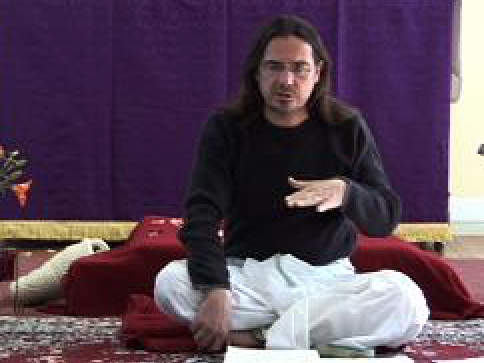Curious about the mental and spiritual aspects of classical Indian yoga? This is the fourth in a series of posts introducing Patanjali’s Yoga Sutras – the original, authoritative Indian yoga text.
Patanjali begins his Sanskrit outline with a description of yoga: the transcendence of thoughts into Consciousness (i.e., “enlightenment”), followed by a description of the various types of thought we need to go beyond, and the key to success: never giving up & always letting go.
In the next two aphorisms Patanjali introduces the five progressive stages of meditation, the primary means to become enlightened.
Chapter 1, aphorisms 17 – 18:
1.17 “ vitarka vichara ananda asmita rupa anugamat samprajnatah“; loosely, “there are four levels of meditation “with seed”: attention, concentration, contemplation and absorption”
1.18 “virama pratyaya abhyasa purvah samskara shesha anyah“; loosely, “with sufficient practice we experience meditation without seed”
As we progress through the four deepening levels of focusing on an object, our understanding of the object expands. Awareness of observable characteristics gives way to intuitive insights about the object. In the fourth, deepest level of focusing on an object, we become fully immersed or absorbed in it, literally unaware of the distinction between ourselves, the object and our observation of it.
From Bernard Bouanchaud’s “The Essence of Yoga”, “In the successive states of union with an object, consciousness does not change. The mind of the person becomes more and more transparent, until consciousness reflects the object of contemplation with purity.”
From Swamij.com, “[T]he meditator systematically moves inward, through four levels or stages of concentration on an object, and then progresses to the stage of objectless concentration” – sort of like with and without training wheels as we learn to ride a bicycle.
When we meditate beyond thought (i.e., “without seed”), our consciousness – i.e., our awareness, which is always “on”, which never changes – is aware only of itself; this is the point of self-realization or enlightenment, a moment of great peace, clarity and compassion.
The four progressively intuitive levels of meditation “with seed” coincide with the four progressively subtle aspects of our mind. For example, assume that we’re focusing on a candle, a metaphor for Consciousness. The stages of meditation might be described as follows:
1. Our conscious mind – the aspect we “hear” – analyzes, discriminates, and judges; this is the aspect of our mind associated with the initial stage of meditation (attention); at this point we’re making an initial cognitive evaluation of the object of our contemplation. Focusing on the candle, I may think to myself, “it’s a candle; it generates heat and light”.
2. Drawing further inward, the outermost aspect of our sub-conscious mind processes our senses and movement; this aspect of our mind is associated with the second level of meditation (concentration); at this point we’re effectively making a sensory evaluation of the candle. I may think about its size, shape, smell, whether it makes sound as it burns, its texture and weight.
3. The middle aspect of our sub-conscious mind stores our memories and emotions and is associated with the third stage of meditation (contemplation); at this point we’re making a more subjective, initially intuitive evaluation of the candle. If I’ve had past experiences with candles those memories may trigger insights or intuition about the function or nature of candles (e.g., I may “see” aspects of the metaphor for Consciousness).
4. The innermost, subtlest aspect of our mind is our sense of “I am”, the innate, deeply rooted perspective from which we witness life and recognize that we are a unique being. This aspect of our mind is associated with the final, deepest level of meditation “with seed” (absorption); at this point, we lose the distinction between ourselves, the candle and the fact that we’re focusing on it – in effect, we lose our sense of individuality and “become one with” the object of our focus. Thoughts are no longer objective or subjective; rather, they’re entirely intuitive. I may identify with the candle to such an extent that I realize things about it that no amount of cognition or prior experience could tell me about its essential nature.
5. Thereafter, continuing to meditate, having exhausted or emptied our mind of all candle-related considerations, we meditate without specific focus, “without seed”, beyond thoughts. Having no thoughts or emotions to be aware of, our Consciousness becomes aware of itself – at which point we experience a state of bliss: a state without judgment or worry; a state of peaceful stillness, quiet acceptance and belonging.
For info about private lessons or workshops in self-discovery and peace of mind see the ‘Contact Us’ page of this site.
God bless, Skip
#patanjali #consciousness #meditation













